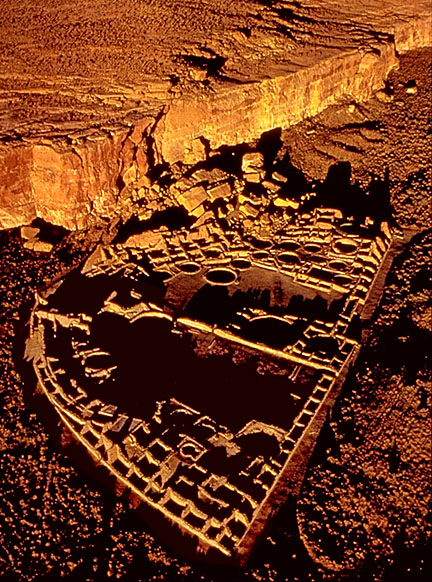If it is, it's probably because you're over-estimating the historical population of London.
Are we talking about 1500CE, when the Christians began obliterating all New World civilizations and advanced Neolithic communities that were precursive to civilization? According to your Wikipedia citation the population of London at that time was between 50K and 100K. None of the Neolithic settlements in the AZ/NM/CO/UT region could possibly have been that big.
True enough, but they had irrigated agriculture and grain processing/storage, not to mention meat curing and leather, so they could support fairly large populations.
But metallurgy delivered several key technologies that brought about a quantum increase in the productivity of farms and the throughput of food transport. The plow and the wheel alone probably increased the maximum food supply to a city, and therefore its maximum population, by an order of magnitude.
[Delivery of food] to London circa 600-1000 AD? Not hardly. We're only talking about a few thousand people.
No. I meant delivery of food to the Neolithic population centers in the Four Corners area. London was in the center of an Iron Age civilization that could grow more food and deliver it faster. I'm not sure what era you're talking about.
Or Chaco Canyon or the like - regardless, it's not like people had a lot of other things to do with their time.
Neolithic agriculture was a full-time job, and full time in those days meant 100-hour work weeks except in winter, when they repaired and replaced their tools. It was difficult for a family to produce significantly more food than they needed for themselves. This is why more than 95% of the human race were doomed to be farmers until the Industrial Revolution improved their productivity in the late 19th century. The farther back you go in history, the larger that percentage becomes.
Standard theories of economic paradigms notwithstanding, my understanding of ancient Anasazi organization is that they had developed technologies for irrigation, fertilizer and grain storage . . . .
Standard Neolithic agricultural technologies the world over.
. . . . and that the cities essentially held large granaries that formed the nexus of the larger regional economy. I.e., the standard tension between "rural food producers" and "urban food consumers" doesn't really apply here, as the entire function of the urban areas was to accumulate, process, store, prepare and distribute food.
Again, standard technology for pre-metallurgy civilization. But let's not forget that the North Americans had three deal-breaker disadvantages compared to their Neolithic counterparts in Asia and Africa.
- Corn: the least nutritious of all cultivated grains. Its protein content is distinctly lower than rice, wheat, barley, etc., requiring its people to eat more meat.
- No dairy animals. So they couldn't supplement their protein ration with milk, which is ten times as efficient use of pasture land as meat.
- No draft animals. Draft and dairy are usually the same large domesticated herbivores and they had none. So all the musclepower for transporting food had to be human muscles. Using a population for traction competes with their use for tending crops and herds.
All told, these handicaps were major obstacles to the establishment of civilization in North America. The Central Americans managed to overcome these obstacles and perhaps the North Americans would have succeeded eventually. But it would more likely have been east of the Mississippi, where trading networks were already in operation when the armies of Jesus came with their gifts of steel, gunpowder, alcohol, syphilis and smallpox.




